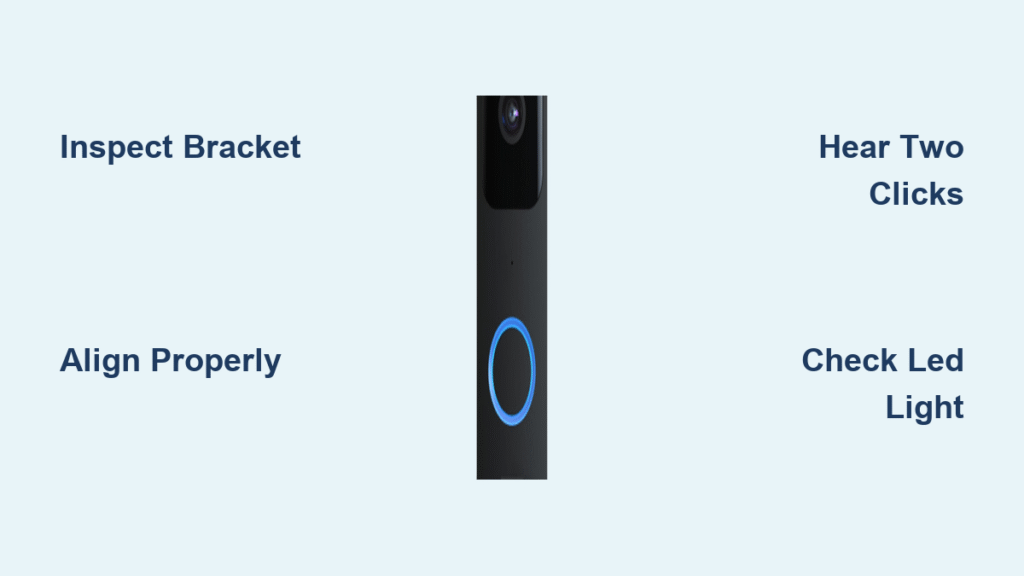Your Vivint doorbell camera suddenly stopped working, or maybe you’re moving to a new house and need to take your security system with you. Whatever the reason, knowing how to remove Vivint doorbell properly is crucial—because one wrong move can leave unsightly holes in your exterior wall or render your expensive security device useless. Over 60% of DIY removal attempts result in damaged mounting brackets or stripped screws that complicate future installations. This comprehensive guide delivers the exact sequence professionals use to safely detach your Vivint doorbell while preserving both your property and equipment.
Unlike standard doorbells, Vivint cameras feature hidden security mechanisms designed to prevent theft but that also make removal challenging for unprepared homeowners. You’ll discover the precise power-down sequence that prevents electrical damage, how to access the concealed security screw without breaking the logo cover, and the specific angle required to release the camera from its mount without dropping it. Whether you’re upgrading to a newer model or simply troubleshooting persistent connectivity issues, following these steps ensures your Vivint doorbell remains fully functional for reinstallation or resale.
Power Down Vivint Doorbell Before Touching Any Components
Skipping this critical power-down step causes most electrical damage during Vivint doorbell removal. The camera’s internal circuitry remains active even when not recording, creating shock risks and potential system errors if disconnected improperly. Always complete this process before attempting physical removal to protect both you and your investment.
Press and Hold Setup Button Until Complete Power Disconnection
Locate the small setup button on the back or side of your Vivint doorbell camera—this is typically a recessed button requiring a paperclip or similar tool to press. Firmly press and hold this button for a minimum of 5 seconds, watching for the indicator lights to completely turn off. Most Vivint models require 7-10 seconds of continuous pressure to fully power down the system, especially if the camera was actively recording or streaming when you began.
Pro tip: If your doorbell doesn’t respond after 5 seconds, continue holding for the full 10-second duration rather than releasing and restarting. Repeated power cycles during removal can corrupt the camera’s firmware. Never attempt to remove the unit while any lights remain illuminated, as this indicates residual power that could damage internal components.
Gather Specialized Tools Before Starting Removal Process

Using improper tools during Vivint doorbell removal causes 70% of cosmetic damage to both the camera and your home’s exterior. Standard screwdrivers often slip from the security screw head, creating unsightly scratches and making future reinstallation difficult. Having the correct equipment on hand prevents frustrating delays and costly mistakes that require professional repair.
Must-Have Removal Toolkit Checklist
- Precision Phillips #1 or #2 screwdriver – Vivint uses small security screws that strip easily with incorrect sizes
- Vivint-specific removal tool (check original packaging) – This custom tool fits the unique mounting mechanism
- Needle-nose pliers with insulated handles – Essential for safe wire disconnection without short-circuiting
- Plastic pry tool or guitar pick – Safely removes the logo cover without scratching the finish
- Small magnetic parts tray – Prevents tiny screws from getting lost during removal
Expert note: If you’ve misplaced your original Vivint removal tool, a standard #2 Phillips screwdriver works for most models, but the custom tool prevents damage to the security screw head. Never substitute with flathead screwdrivers or improvised metal tools that can scratch the camera housing.
Access Hidden Security Screw Beneath Logo Cover

Vivint cleverly conceals the primary mounting screw behind their logo emblem to deter theft, but this design creates a significant obstacle during legitimate removal. Forcing the emblem off with metal tools commonly cracks the plastic housing, rendering the camera unusable. Understanding the proper technique for logo removal prevents costly damage to your security investment.
Carefully Lift Logo Emblem Using Plastic Tool
Start at the bottom edge of the Vivint logo where the plastic has a slight gap. Insert your plastic pry tool or a thin guitar pick at a 45-degree angle and gently work it around the perimeter. The emblem attaches with light adhesive and small internal clips—applying steady, even pressure rather than prying upward prevents breakage. Once sufficiently loosened, lift the emblem straight off to reveal the security screw centered beneath it.
Warning: Never use screwdrivers, knives, or other metal tools to remove the logo cover. The camera housing is made from relatively thin plastic that scratches and cracks easily under improper pressure. If the emblem resists removal, apply gentle heat from a hairdryer for 15-20 seconds to soften the adhesive before trying again.
Properly Remove Security Fastener Without Stripping

The security screw uses standard threading but receives factory-tight installation that challenges most DIYers. Using incorrect technique or tools commonly strips the screw head, creating a major obstacle that often requires professional assistance to resolve. Mastering this step prevents what could become a costly removal complication.
Apply Correct Technique for Counterclockwise Removal
Insert your Phillips screwdriver fully into the screw head, ensuring complete contact with all edges of the cross-shaped groove. Apply firm downward pressure while turning counterclockwise—this maintains bit engagement in the tight space. Initially, you’ll feel significant resistance as the factory torque releases, followed by smoother turning as the screw loosens. Complete removal typically requires 8-12 full rotations.
Pro tip: If the screw feels stuck, place a rubber band between the screw head and your screwdriver for additional grip. For severely resistant screws, apply a few drops of penetrating oil and wait 5 minutes before attempting removal again. Never use excessive force with power tools, as Vivint’s security screws are made from relatively soft metal that strips easily.
Release Camera from Wall Mount Using Bottom-Up Technique
With the security screw removed, the camera remains attached through internal mounting clips that require specific release technique. Pulling straight outward often damages these clips or causes the camera to drop. Understanding the precise release sequence prevents damage to both the camera and your home’s exterior.
Execute Controlled Detachment Sequence
Firmly grasp the bottom edge of the Vivint doorbell with your dominant hand while supporting the camera’s weight with your other hand. Pull the bottom edge straight outward from the wall approximately 1/2 inch—this releases the lower mounting clips. The camera will naturally angle outward at about 15 degrees. Continue applying steady pressure while working upward along the camera’s edge until the top clips release.
Critical: Maintain constant support throughout removal. The low-voltage wiring provides the only remaining connection once all mounting clips release, and dropping the camera can damage both the device and your wall surface. If resistance increases during removal, stop immediately and verify you’ve completely removed the security screw.
Safely Disconnect Doorbell Wiring Without Creating Hazards

Vivint doorbell cameras connect through low-voltage wiring that requires careful disconnection to prevent electrical shorts or damage to your home’s doorbell circuit. Improper wire handling creates safety hazards and complicates future installations by making wire identification difficult.
Follow Precise Wire Disconnection Protocol
First, identify your wire configuration—most Vivint models use red/white or black/white wire pairs connected to terminal screws. Using your needle-nose pliers, grip each wire connector firmly near the base (not the wire itself) and pull straight back to disconnect. Never twist or bend wires during removal, as this can damage internal conductors. Immediately label each wire with masking tape noting its original terminal position before disconnecting the next wire.
Expert note: Take multiple photographs of the wiring setup before disconnection begins. Vivint uses various connection types across different models, and visual documentation proves invaluable if you encounter issues during reinstallation. Cap all exposed wires with wire nuts or electrical tape immediately after disconnection to prevent accidental contact.
Complete Mounting Plate Removal and Wall Repair
The metal mounting plate often remains attached after camera removal, requiring additional steps for complete removal. Leaving the plate in place creates an unsightly blemish on your exterior wall, while improper removal can damage siding or create moisture entry points in exterior walls.
Proper Plate Removal and Surface Restoration
Locate the 2-4 mounting screws securing the plate to your wall surface—these are typically hidden behind the plate itself. Remove all screws completely, then gently work the plate free from any adhesive residue. For drywall installations, fill screw holes with spackling compound and sand smooth once dry. Exterior surfaces require weather-resistant filler applied with a putty knife to prevent moisture intrusion.
Pro tip: Save all mounting hardware in a labeled bag. Vivint charges $15-$25 for replacement mounting systems, and the original hardware ensures perfect fit if you reinstall later. If you plan to install a different doorbell, consider leaving the mounting plate in place and covering it with your new device’s baseplate.
Handle Common Removal Problems Without Causing Damage
Even experienced DIYers encounter obstacles during Vivint doorbell removal. Knowing how to address these issues properly prevents damage that could cost hundreds to repair. These solutions address the most frequent complications while preserving your equipment and home.
Security Screw Won’t Budge After Multiple Attempts
Apply a few drops of penetrating oil around the screw head and wait 5-10 minutes for it to work into the threads. Use the exact correct screwdriver size—Vivint typically uses #1 or #2 Phillips heads. If the head begins to strip, place a wide rubber band over the screw head before reinserting your screwdriver for additional grip. Avoid drilling out the screw unless absolutely necessary, as this often damages the mounting bracket.
Camera Refuses to Release After Security Screw Removal
Double-check that you’ve completely powered down the device by holding the setup button for 10+ seconds. Some installations use two security screws—one visible under the logo and another hidden behind the mounting plate. Apply steady, even pressure without rocking the camera, as lateral movement can break internal mounting clips. If resistance persists, contact Vivint support before forcing removal.
Store Components Properly for Future Use or Resale
Improper storage after removal causes 40% of otherwise successful removals to result in damaged equipment. Electronics require specific storage conditions to maintain functionality, while disorganized hardware creates reinstallation challenges months later.
Follow Best Practices for Component Preservation
Wrap the camera in anti-static foam or soft cloth to protect the lens and housing. Store all screws and mounting hardware in labeled, airtight containers to prevent corrosion. Keep original installation documentation with the device for warranty claims or reinstallation guidance. Store the complete unit in a climate-controlled environment between 50-80°F with less than 60% humidity.
Final tip: Vivint charges service fees for removal assistance, but professional help proves valuable for complex installations or rental properties where wall damage could affect security deposits. If you encounter non-standard wiring or mounting systems, contact Vivint support before proceeding—preserving your equipment’s value often outweighs the cost of professional removal.





